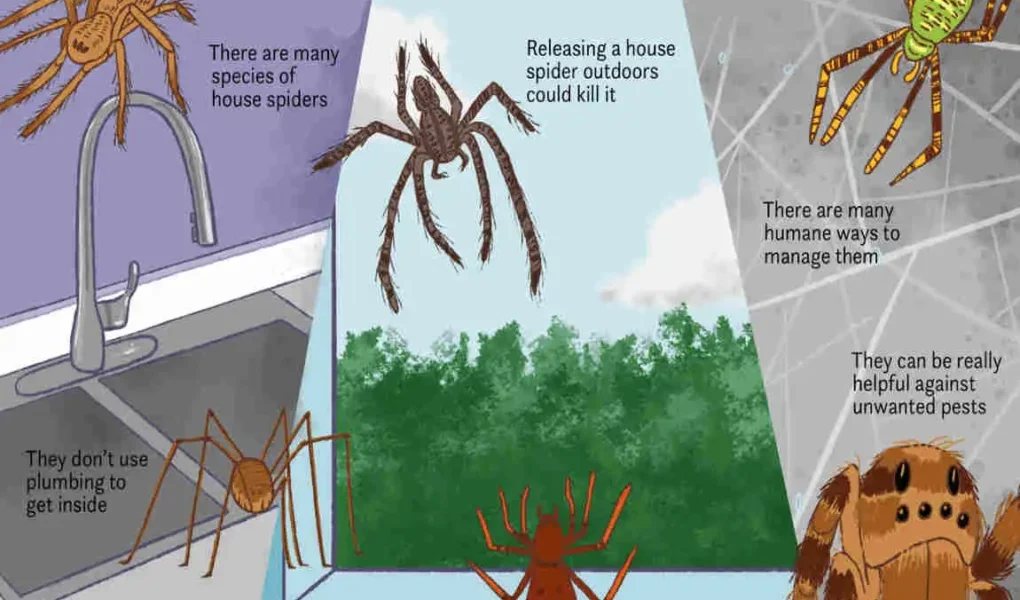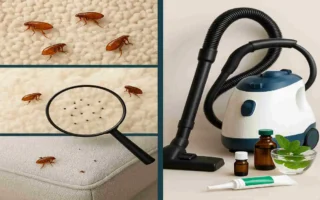Have you ever spotted a spider scuttling across your living room floor and wondered how long it’s been calling your home its own? You’re not alone in this curiosity. Millions of homeowners share their living spaces with these eight-legged roommates, often without realizing just how long these tiny creatures might stick around.
Understanding how long spiders live in your house isn’t just about satisfying curiosity. It’s about making informed decisions regarding your home environment. Whether you’re dealing with a spider phobia or want to understand these fascinating creatures better, knowing their indoor lifespan helps you manage their presence more effectively.
Let’s pull back the curtain on the secret lives of house spiders. You might be surprised to learn that some of your arachnid housemates have been with you longer than your favorite houseplant!
What Influences Spider Lifespan Indoors?
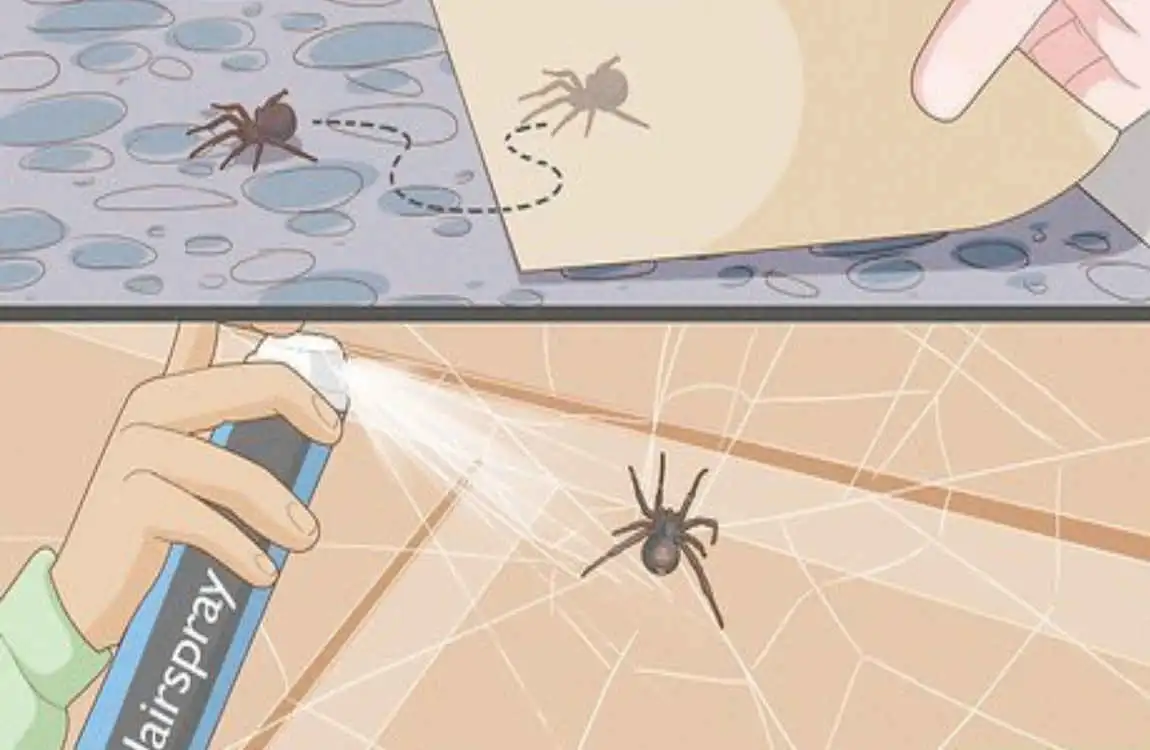
The life expectancy of spiders in your home depends on several interconnected factors. Think of your house as a unique ecosystem where temperature, food supply, and home safety all play crucial roles in determining whether a spider thrives or merely survives.
Environmental Factors Inside Your Home
Your home’s internal environment creates a microclimate that can either extend or shorten a spider’s life. Unlike the harsh outdoor world, indoor spaces offer stable conditions that many spiders find ideal.
The consistency of indoor temperatures means spiders don’t face the extreme weather events that often claim their outdoor cousins. Your heated home in winter and cooled spaces in summer create a year-round comfort zone that can significantly extend their lifespan.
Food Availability Makes All the Difference
A spider’s Survival hinges on its ability to catch prey. Your home likely hosts various small insects that serve as a buffet for hungry spiders. From fruit flies in your kitchen to moths near your closets, these food sources directly impact how long spiders can survive indoors.
Homes with more insects naturally support longer spider lifespans. If you’ve noticed spiders setting up shop in certain areas, it’s probably because they’ve discovered a reliable food source there. Corner spaces, windowsills, and basements often become spider hotspots for this very reason.
Temperature and Humidity Effects
Spiders are remarkably adaptable, but they still have preferred temperature ranges. Most house spiders thrive between 65-75°F (18-24°C), which coincidentally matches typical home temperatures.
Humidity levels also matter tremendously. Bathrooms and basements with higher moisture levels often harbor more spiders because these conditions help them stay hydrated. Dry environments can shorten their lifespan, while moderate humidity extends it.
Shelter and Safe Hiding Spots
Your home offers countless hiding opportunities that outdoor spiders can only dream home about. Behind furniture, inside wall voids, and within cluttered storage areas provide perfect refuges from predators and disturbances.
These safe spaces allow spiders to conserve energy, molt safely, and reproduce without constant threats. The more undisturbed corners your home has, the longer spiders can live there.
Human Activity and Pest Control Measures
Your daily activities significantly impact spider safety longevity. Regular cleaning, vacuuming, and pest control treatments can dramatically reduce spider lifespans. Conversely, rarely disturbed areas like attics or spare rooms become spider sanctuaries where they can live out their whole lifespan.
Common Indoor Spider Species and Their Lifespans
Not all spiders are created equal when it comes to longevity. Let’s meet the most common houseguests and discover how long each species typically survives indoors.
House Spider (Tegenaria domestica)
The common house spider is your most frequent eight-legged visitor. These brownish-gray arachnids with their distinctive chevron patterns on their abdomens are perfectly adapted to indoor life.
Female house spiders can live an impressive 1-2 years in your home guide, while males typically survive only a few months after reaching maturity. Females outlive males because they don’t embark on dangerous mating journeys and can continue eating and growing after reproduction.
You’ll often find these spiders in corners, creating those classic funnel-shaped webs. Their ability to go weeks without food contributes to their impressive indoor Survival rate.
Daddy Long Legs (Pholcidae)
Despite their delicate appearance, cellar spiders or “daddy long-legs” are surprisingly long-lived. These spindly creatures can survive 2-3 years indoors design under optimal conditions.
Their success stems from their adaptability and efficiency. They’ll even eat other spiders, including members of their own species, ensuring a steady food supply. Their messy, irregular webs might not win beauty contests, but they’re incredibly effective at catching prey.
Jumping Spiders (Salticidae)
These charismatic little hunters, with their large, forward-facing eyes, typically live 6 months to 2 years indoors. Unlike web-builders, jumping spiders actively hunt their prey, which requires more energy but gives them access to a wider variety of food sources.
Their shorter lifespan compared to web-builders reflects their more active lifestyle. However, their intelligence and hunting skills often help them find consistent food sources in your home.
Cellar Spiders
True cellar spiders can live up to 3 years in the stable environment of your basement or crawl space. These areas provide the perfect combination of humidity, temperature stability, and abundant prey.
Their longevity secret lies in their low metabolic rate and ability to survive prolonged periods without food. When prey is scarce, they can enter a state of reduced activity, extending their lifespan considerably.
Spider Life Cycle Inside the House
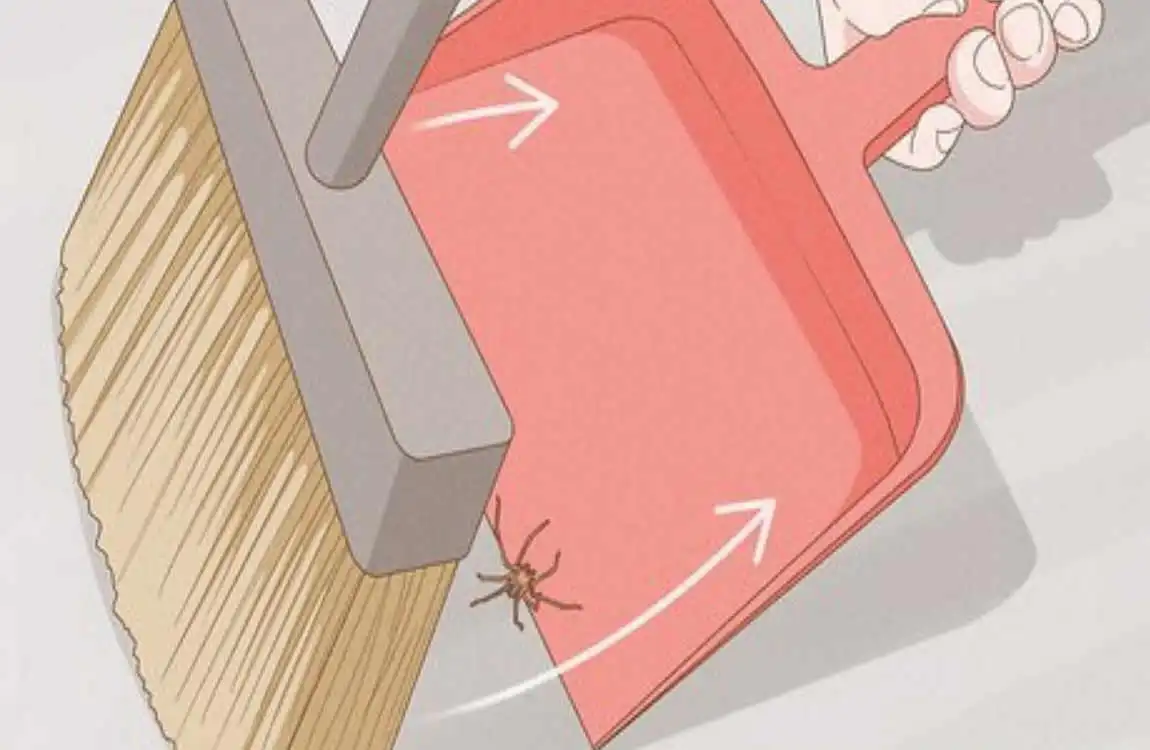
Understanding the home spider life cycle helps explain why you might suddenly see baby spiders or why certain times of year bring more spider sightings.
Stages of Development
Every spider in your house goes through three main life stages: egg, spiderling, and adult. This journey from egg to adult can take anywhere from a few weeks to several months, depending on the species and conditions.
The egg stage typically lasts 2-3 weeks indoors, where stable home temperatures speed up development. A single egg sac can contain anywhere from a dozen to several hundred eggs, though not all will survive to adulthood.
Adult Life and Reproduction
Upon reaching maturity, male spiders typically live only a few more weeks or months, dedicating their remaining time to finding mates. Females, however, can live much longer, continuing to produce egg sacs throughout their adult life.
A single female can produce multiple egg sacs during her lifetime, each containing dozens or hundreds of eggs. This reproductive capability explains why spider populations can seem to explode suddenly in your home features.
Gender Differences in Lifespan
Female spiders consistently outlive males across virtually all indoor species. While males might live 3-6 months after reaching maturity, females of the same species could survive 1-3 years.
This disparity exists because males often stop eating once they reach sexual maturity, focusing entirely on reproduction. Females, conversely, need to maintain their strength for egg production and can continue feeding throughout their lives.
How Long Do Spiders Actually Live in Your House?
Now for the million-dollar question: how long do spiders live in your luxury house on average? The answer varies more than you might expect.
Average Lifespan Ranges
Most common house spiders live between 6 months and 2 years indoors. However, some species can survive much longer under ideal conditions. Here’s a breakdown of typical lifespans:
Spider Type Average Indoor Lifespan Maximum Recorded
House Spider 1-2 years 7 years
Cellar Spider 2-3 years 5 years
Jumping Spider 6-18 months 3 years
Wolf Spider 1-2 years 4 years
Black Widow 1-3 years 5 years
Factors That Extend Spider Life
Several conditions can help spiders live longer in your home:
Consistent food supply tops the list. Home tips with steady insect populations support longer-lived spiders. Even a few flies or gnats per week can sustain a spider for months.
Minimal disturbance also promotes longevity. Spiders in rarely cleaned areas, like attics or behind heavy furniture, often reach their maximum lifespan.
Optimal humidity levels between 60% and 70% create ideal conditions for most species. This explains why bathroom and basement spiders often outlive those in drier areas.
Factors That Shorten Spider Life
Conversely, certain conditions can drastically reduce spider lifespans indoors:
Regular cleaning and vacuuming obviously impact spider Survival. Pest control treatments, even those not specifically targeting spiders, can shorten their lives through secondary exposure.
Competition from other spiders can also be deadly. In areas with high spider density, cannibalism and territorial disputes claim many lives.
Extreme temperatures from heating or cooling vents can stress spiders, reducing their lifespan even if they don’t die immediately.
Seasonal Influences
Despite your home’s controlled environment, seasons still affect indoor spider populations and lifespans. Fall brings an influx of spiders seeking winter shelter, while spring triggers mating behaviors that can shorten male lifespans.
Winter actually extends many spiders’ lives indoors by slowing their metabolism. They eat less but also expend less energy, potentially adding months to their lifespan.
How to Identify Spider Age and Health Indoors
Determining a spider’s age isn’t as straightforward as counting rings on a tree, but several visual and behavioral clues can give you hints.
Visual Age Indicators
Size matters when estimating spider age. Younger spiders are obviously smaller, but size alone can be misleading since different species have different adult sizes.
Look at the color intensity of their markings. Younger spiders often have more vibrant colors and clearer patterns, while older spiders may appear faded or dusty.
The condition of their legs provides another clue. Missing legs or damaged appendages often indicate an older spider that’s survived multiple molts and encounters.
Behavioral Signs of Life Stage
Web quality can reveal a spider’s age and health. Young, healthy spiders build neat, geometric webs, while older or unhealthy spiders may construct messier, less organized webs.
Activity levels also change with age. Younger spiders move more quickly and hunt or rebuild webs more actively. Older spiders conserve energy, driving less and maintaining the same web for longer periods.
Health Indicators
A healthy indoor spider displays several characteristics:
- Active movement when disturbed
- Plump abdomen indicating good nutrition
- Clean, intact legs without damage
- Regular web maintenance or hunting behavior
Unhealthy spiders show opposite signs: sluggish movement, shrunken abdomens, damaged limbs, and abandoned or poorly maintained webs.
Should You Be Concerned About Indoor Spiders?
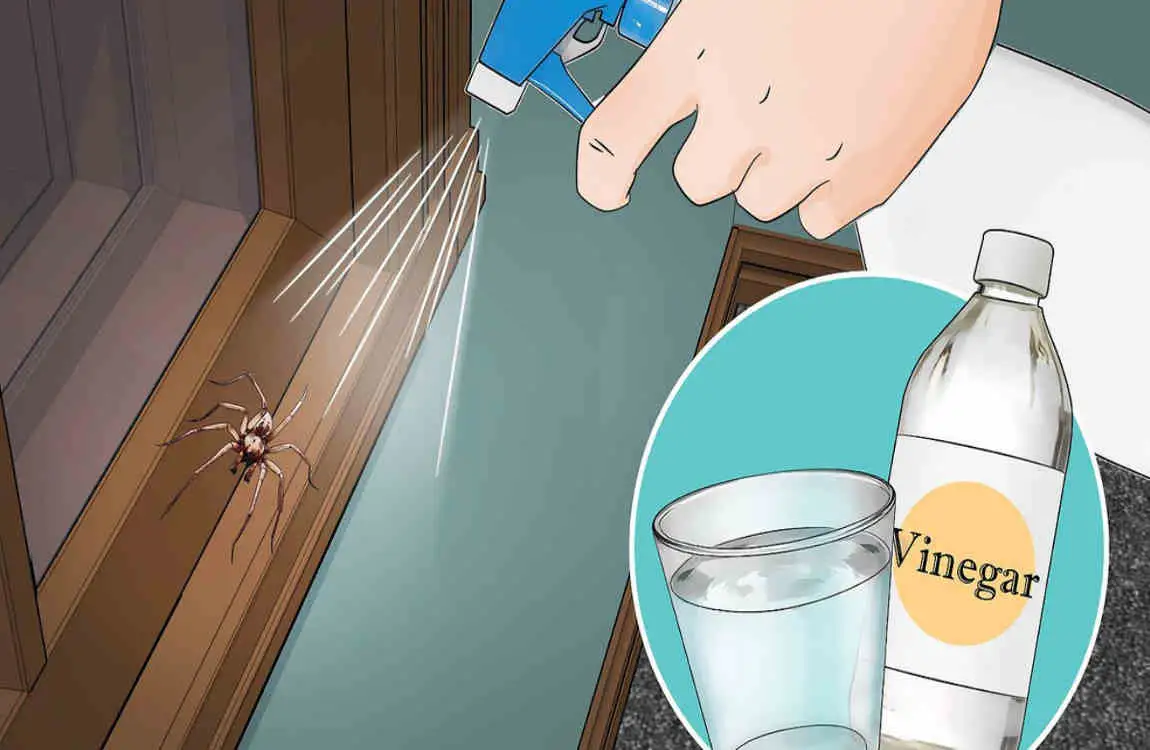
Before you reach for the bug spray, let’s address the elephant in the room: are house spiders actually a problem?
Evaluating Real Risks
The truth might surprise you. Of the thousands of spider species in North America, only two groups pose any real danger to humans: black widows and brown recluses. Even these species rarely bite unless directly threatened.
Most house spiders are completely harmless to humans. They can’t even pierce human skin with their tiny fangs. Your risk of being harmed by a house spider is statistically lower than being struck by lightning.
Benefits of Your Eight-Legged Roommates
Spiders are nature’s pest control experts. A single spider can consume hundreds of insects annually, including:
- Mosquitoes carrying diseases
- Flies spreading bacteria
- Moths damaging clothing
- Gnats are annoying your family
- Ants are invading your pantry
By allowing spiders to live in your house, you’re employing free, eco-friendly pest management that works 24/7 without chemicals or electricity.
When Spider Presence Signals Problems
While spiders themselves aren’t usually problematic, large spider populations might indicate other issues. Numerous spiders suggest abundant prey, which could mean you have an underlying insect infestation.
If you’re seeing multiple spiders daily, investigate for:
- Moisture problems attract insects
- Food storage issues are drawing pests
- Structural gaps allowing entry
- Poor sanitation supports insect breeding
Effective Ways to Manage Indoor Spider Populations
If you’ve decided to manage your spider population, there are humane and effective methods that don’t require harsh chemicals.
Preventive Home Maintenance
Prevention beats removal every time. Start by eliminating what attracts spiders in the first place:
Reduce clutter where spiders hide. Organize storage areas, keep floors clear, and minimize cardboard boxes that provide perfect spider home guide.
Control humidity levels in damp areas with dehumidifiers. Most spiders prefer 60-70% humidity, so keeping levels below this discourages them from settling in.
Regular vacuuming removes spiders, webs, and egg sacs while also eliminating the insects they feed on. Pay special attention to corners, baseboards, and under furniture.
Sealing Entry Points
Spiders enter through surprisingly small gaps. Inspect and seal these common entry points:
- Gaps around windows and doors
- Cracks in foundation walls
- Spaces around utility lines
- Damaged window screens
- Gaps under doors
Use caulk for small cracks and steel wool for larger gaps. Door sweeps and weather stripping provide additional barriers against eight-legged invaders.
Natural Spider Deterrents
Several natural substances repel spiders without harming them or your family:
Essential oils like peppermint, eucalyptus, and tea tree create scents spiders avoid. Mix 10-15 drops with water in a spray bottle and apply to problem areas weekly.
Diatomaceous earth creates a barrier that spiders won’t cross. Sprinkle this natural powder along baseboards and entry points.
Cedar chips or blocks in closets and storage areas naturally repel spiders while keeping your belongings fresh-smelling.
Safe Removal Methods
When you encounter a spider, please resist the urge to squash it. Instead, try these humane removal techniques:
The glass-and-card method works perfectly. Place a glass over the spider, slide a card underneath, and release it outside.
For high or hard-to-reach spiders, use a spider catcher tool with a long handle. These devices let you safely capture and release spiders without getting close.
Consider relocation rather than removal. Moving a spider from your bedroom to your garage or basement lets it continue pest control duties in a less intrusive location.
When Professional Help Makes Sense
Sometimes, professional intervention becomes necessary. Consider calling experts when:
- Spider populations seem unusually large
- You’ve identified venomous species
- DIY methods haven’t worked
- You have severe arachnophobia affecting your daily life
- Spiders indicate other pest problems
Professional pest controllers can identify species, locate breeding sites, and implement targeted treatments that resolve the issue without excessive chemical use.
When to Seek Help: Dangerous Spider Species Indoors

While most house spiders are harmless, knowing how to identify potentially dangerous species is crucial for your family’s safety.
Identifying Venomous Indoor Spiders
Black widow spiders are perhaps the most recognizable of the dangerous spiders. Look for:
- Shiny black body
- Red hourglass marking on the abdomen
- Round, bulbous abdomen
- Irregular, messy webs in dark corners
Brown recluse spiders are more challenging to identify but equally important to recognize:
- Light to dark brown color
- Violin-shaped marking on the back
- Six eyes arranged in pairs
- Uniform leg color without stripes
Lifespan of Dangerous Species
Ironically, dangerous spiders often live longer than harmless species. Black widows can survive 1-3 years indoors, while brown recluses might live 2-4 years in your home.
Their longevity means a single dangerous spider could remain in your house design for years if undisturbed. This makes proper identification and removal even more critical.
Emergency Response to Spider Bites
If you suspect a venomous spider bite, take immediate action:
- Clean the wound with soap and water
- Apply ice to reduce swelling
- Elevate the bitten area if possible
- Take a photo of the spider if it is safe to do so
- Seek medical attention immediately
Don’t wait for symptoms to worsen. Even if you’re unsure whether the spider was venomous, it’s better to be safe and get a medical evaluation.

